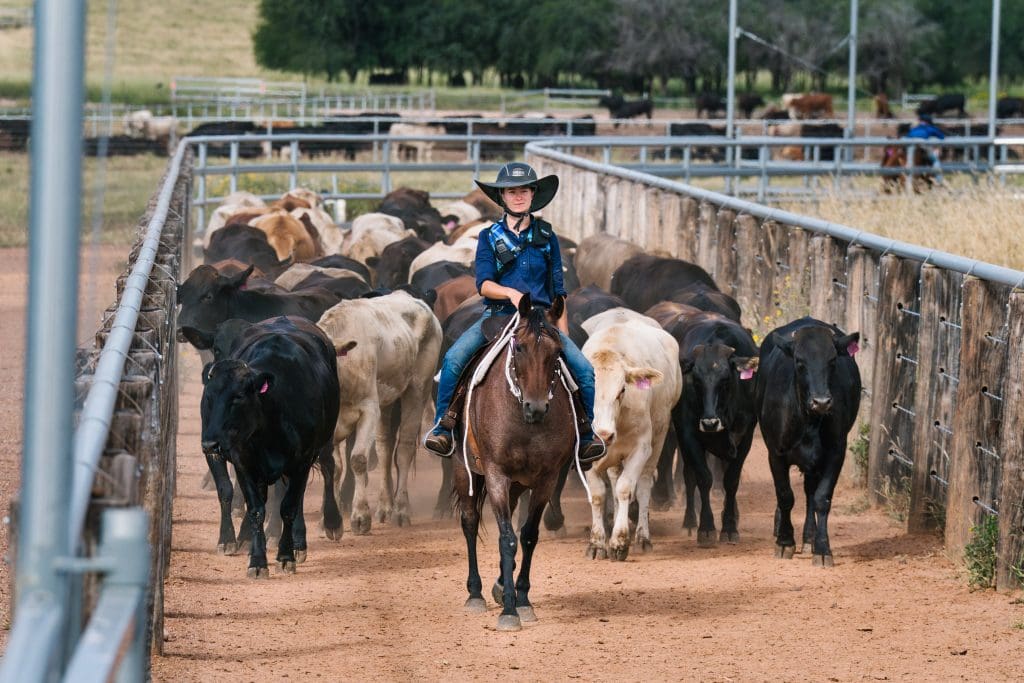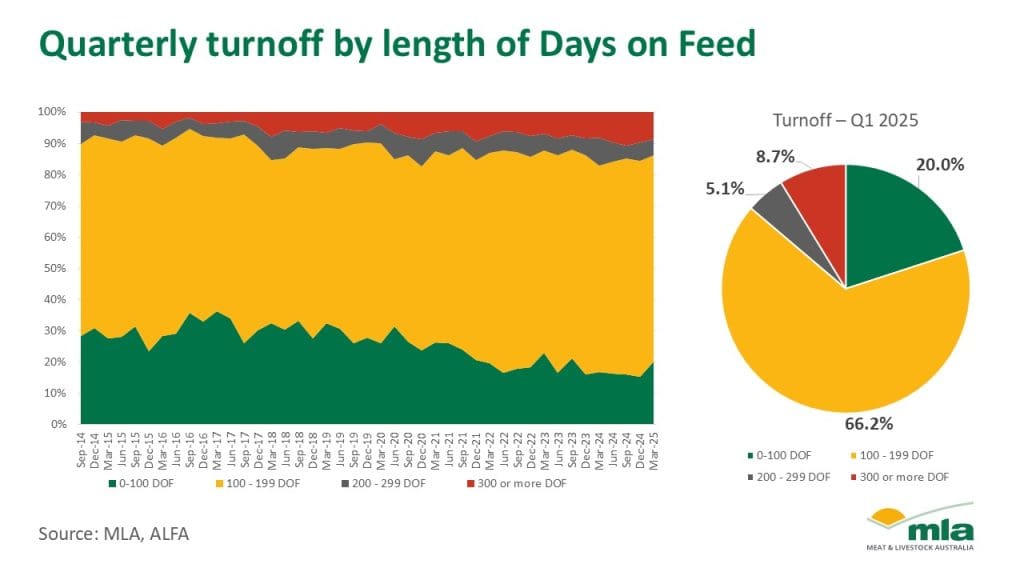
GREATER clarity and resolution will be provided on the Australian grainfed beef industry’s performance following a decision to re-introduce segmented days-on-feed results in the industry’s quarterly feedlot surveys.
Historically, information was provided in the quarterly survey compiled by the Australian Lot Feeders Association and Meat & Livestock Australia on different feeding segments, along the lines of domestic, shortfed export, midfed export and long fed export. For a short period around 2010, this was reduced simply to ‘export’, ‘domestic’ and ‘unknown.’
Around ten years ago, it was decided to discontinue the release of any days-on-feed breakdown to the broader industry. The reason given at the time was that it potentially gave too much away to export beef customers, who could use the data against Australian exporters in the critical price negotiation phase.
As the industry has grown, it’s now felt that the time is right to re-introduce the data into the quarterly survey statistics – at least in a ‘percentage of overall numbers’ form.

ALFA chief executive Christian Mulders
Australian Lot Feeders Association chief executive officer Christian Mulders said the ‘Quarterly Turnoff by Length of Days on Feed’ information provides a historical window into the range of feeding regimes practiced, expressed as a percentage of overall turnoff.
“While the length of days-on-feed categories don’t directly align with specific commercial programs, they offer insight into the broad short-, medium- and long-fed feeding regimes typically practised by lot feeders, depending on the market they’re targeting,” he said.
“There’s an inherent lag between when commercial feeding decisions are made and when this data becomes available. This lag period means the information is historical but offers a valuable lens through which to understand the ongoing evolution of the Australian feedlot industry.”
“The trend paints a picture of how the sector has changed over time and highlights how lot feeders continue to deliver a diverse range of grain fed beef to meet evolving market demands,” Mr Mulders said.
The re-activated feeding categories to be provided from the next (June quarter) lotfeeding results, due for release around mid-August will include categories for:
- Less than 100 days (effectively 60-70 day heifers and steers fed for grainfed domestic yearling programs)
- 100-199 days, representing ‘shortfed’ and ‘mid-fed’ export weights
- 200-299 days, including most ‘longfed’ Angus programs, and
- + 300 days. With long-fed Angus now mostly fed 260-270 days instead of +300 days, this means this category is now exclusively represented by F1-Fullblood Wagyu cattle. If readers can provide exceptions to this, we’d be keen to hear about them.
So what does the attached graph of length of days on feed as a percentage of overall grainfed turnoff show?
Less than 100 days (green): The graph appears to show a decline in feeding activity for domestic cattle, but this is misleading. That’s because the graph entries are based on ‘percentages of overall’ numbers on feed. Thus ‘100pc’ back in March 2014 represented only 874,000 total head on feed, versus 1.5 million today. Certainly the proportion of <100 days cattle in the overall mix has declined, but that’s only because other categories have grown in volume, at a faster rate. Both Woolworths and Coles contract grainfed supply programs have grown over the past ten years, through organic growth as both companies have added new supermarkets across Australia (Woolworths now operates 1111 sites, including the scaled-down Metro sites). But equally, both major supermarkets now buy a lot more product (most likely, grainfed) out of the general market, to supplement supply from feedlot contract holders. In the December 2024 quarter, the domestic yearling grainfed segment < 100 days accounted for 20pc of total grainfed cattle turnoff.
100-199 days (yellow): The graph clearly indicates substantial growth in so-called ‘shortfed’ and ‘lower-midfed’ programs, both in percentage of overall terms, as well as outright numbers. What’s not evident is the trend towards feeding cattle on ‘beyond 100 days’ which, anecdotally, is becoming more common – especially for Angus programs chasing marbling expression. In the December 2024 quarter, this segment accounted for 66.2pc of national grainfed cattle turnoff
200-299 days (grey): The longer-fed segment has changed very little in percentage terms over the last 11 years, but because the total number of cattle on feed has grown, this segment has also experienced some expansion in outright numbers. In the December 2024 quarter, this segment accounted for 5.1pc of grainfed cattle turnoff
+300 days (red): Everybody is aware of the progression of longfed Wagyu feeding in Australian feedlots over the past ten years, and the trend is clearly evident in the graph. Given that no Angus cattle (that we are aware of) are now longfed beyond 300 days, it can be assumed that this category is now entirely made up of Wagyu-influenced cattle, from F1s to Fullbloods. In the December 2024 quarter, this accounted for 8.7pc of grainfed cattle turnoff
Diversity evident
What the re-activated days-on-feed segment graph shows is that, despite a trend to growing average days on feed in the Australian grainfed beef industry (calculated at around 159 days in our article back in May), due to the continued encroachment of Wagyu longfeeding operations, shortfed (100-199 day cattle continue to dominate the grainfed industry in Australia. Supporting that, grainfed beef exports in the past three months have hit all-time records, hitting almost 40,000t for the month of June, and 404,000t for the fiscal year ended 31 June.
However the graph also shows just how diverse the Australian grainfed industry is in comparison with the United States. Virtually all fed cattle in the US are fed for a single end-point, around 130 days. In Australia, depending on the segment, significant numbers of Australian cattle are fed anywhere from 60 days (domestic heifers) to 500 days (Fullblood Wagyu, chasing marbling scores 9+ and higher).


HAVE YOUR SAY